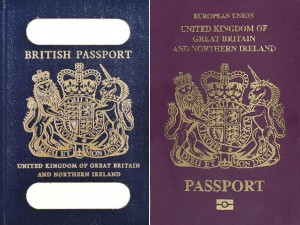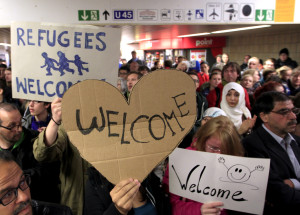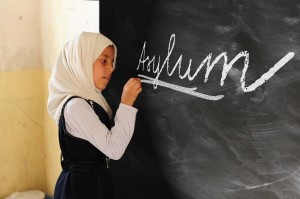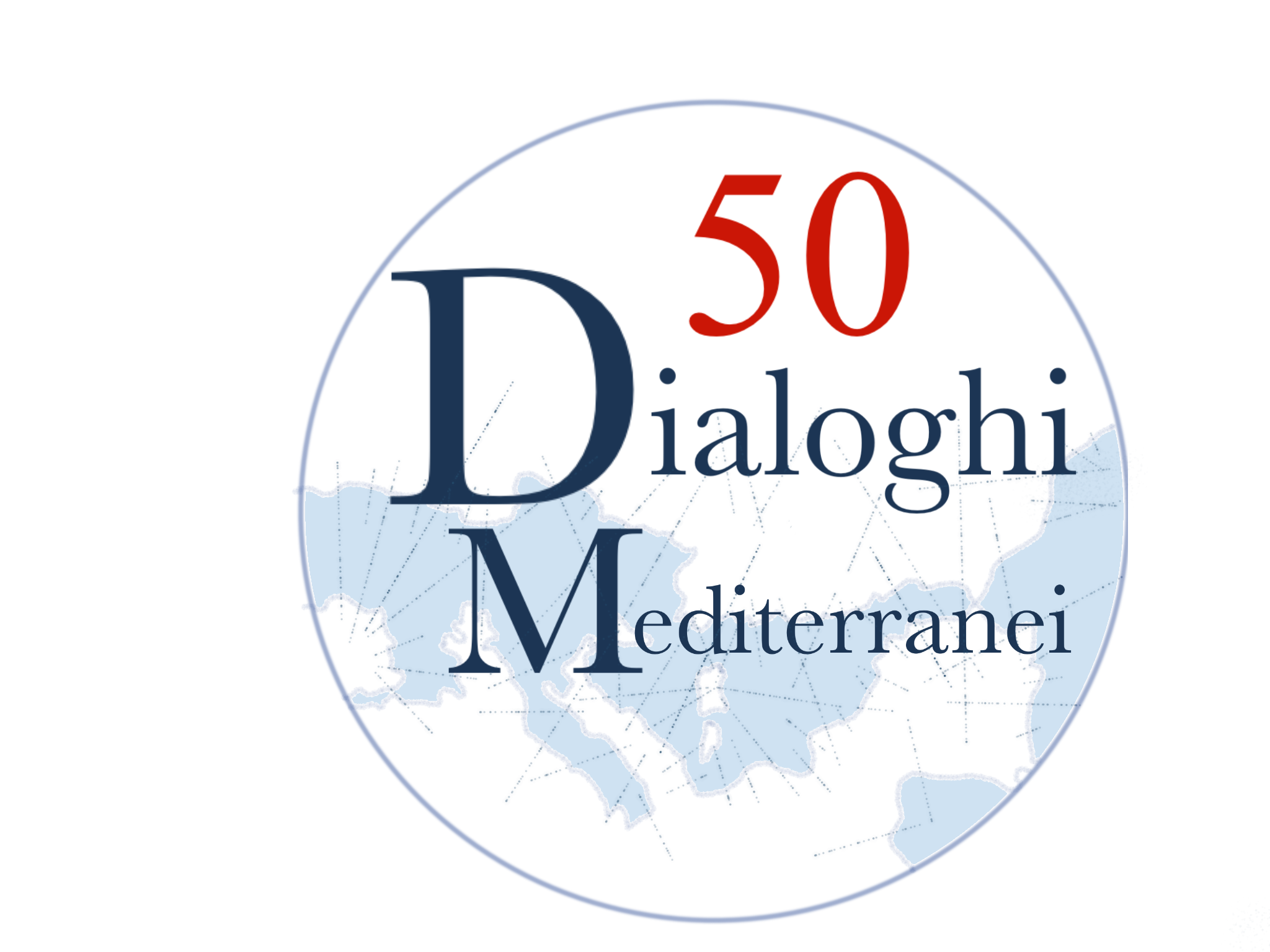Currently the German nation is one of the countries with the highest number of immigrants in Europe (about 9% of the resident population is of foreign origin). Despite this fact, Germany finds it difficult to identify itself as a country of immigration. (Melotti, 2004). The migration policies of the last decades were entirely aimed at facing the social problems of temporary workers only.
After the Second World War, immigration was sustained by the German governments uninterruptedly until the energetic crisis of 1973, to cope with internal labor needs for the reconstruction of the country, stipulating numerous agreements for the recruitment of foreign workers. The first bilateral agreement, the one with Italy, was signed in 1955 and it allowed Italian workers to go to Germany to be employed; the subsequent agreements were established with Spain in 1966, with Turkey in 1961, with Morocco in 1963, Portugal in 1964, and Yugoslavia in 1966.
An important role for the growth of immigration in Germany is also assumed by the facilitated entry for asylum seekers and political refugees guaranteed by the German constitution.
The policies implemented by the government were not very incisive and aimed more at primary reception needs such as the establishment of dormitories, the recognition of workers’ health rights, not considering the activation of structural integration policies necessary and immediate.
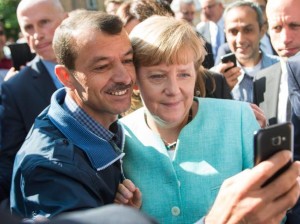 One of the first restrictive laws on facilitated expulsions (1965)
One of the first restrictive laws on facilitated expulsions (1965)
In 1965 the law about the facilitation of expulsion of foreigners was approved, which gave full power to the German authorities to grant or withdraw the residency permit, to promote the expulsion for those who didn’t follow the requirements, but also for citizens subject to conviction (also for violation of the traffic rules) or considered dangerous for public safety. Non-EU workers who worked interruptedly in Germany for a minimum of 5 years could apply for the special work permit. Until the end of the 1960s, the regulations adopted for migratory policies considered for family reunifications at least 3 years of permanence in the territory, while for the children of immigrants born in Germany it was impossible to become German citizens (ius sanguinis) (Kammerer, 2003).
The German government in the Seventies began to become aware of the growing number of immigrants who wanted to stay longer in the national territory and to meet these new needs it proposes a strategy based primarily on reception and integration, mainly aimed at those who had a guaranteed work, who had obtained family reunification and who had acquired the right of residence in the German society over the years.
In 1972 the Ministry of Labor proposed for the first a legislation regarding the integration of foreign workers into the federal territory, with a very clear aim, that of comparing the foreign worker to the German worker in the field of social policies, even if it was not easy to face problems related to housing, health, trade union involvment, pension problems of the elderly, children in schools, problems of religion, of language. The second core of the German immigration strategy was based on activating a return policy in the country of origin and restricting entry for work reasons.
 The 1973 energetic crisis and the closure of borders for foreign citizens
The 1973 energetic crisis and the closure of borders for foreign citizens
The 1973 crisis induced also Germany to close the borders for immigrants, with the exception of certain sectors of economy (hotel, construction and health). The immigration debate begins to be a central point in the political debate of all the guidelines, especially during election campaigns.
In 1982, after the constructive distrust of the Schmidt government, Helmut Kohl was appointed Chancellor and he convened the early elections in 1983 and won them.
The “pay-to-go” law of 1983
During the Kohl government in 1983 a new law was approved to facillitate the return to the country of origin of the immigrants, stimulating them with “return prizes”: each unemployed immigrant received about 10,500 marks and the return of the whole sum paid in advance for social security and social benefits.
Just to give some significant data, Italians’ returns exceed 785,000 people making up 17% of all returns, while the second group with the largest number of returns is Yugoslavia with 500,000 people, more than 10%; also Greeks count a high number of returns, more than 300,000, about 7%. However, incoming flows continued to increase over the years.
P. Kammerer explains that the number of immigrants in the years 1973-79 was about 4 million and between 1979-80 it grew to 4.4 million, while between 1980-89 it remained at the same level (Kammerer, 2003). With the fall of the Berlin wall a new phase begins in the history of migration in Germany, with a further increase in migration flows coming mainly from neighboring countries, such as Poland and Yugoslavia. As a result, in the 1990s there were around three million more immigrants (7.3 million total) than in the 1980s.
 The new integration law for foreigners, 1990
The new integration law for foreigners, 1990
In 1990 the Kohl government issued a new law about the integration of foreigners. The first part of the law establishes the criteria that foreigners must have to obtain the right to reside in Germany:
a) prove that they possess the financial requirements for maintenance,
b) prove that they have an adequate housing,
c) prove that they do not need government assistance,
d) to have a clean record,
e) be faithful to the republic,
f) prove to know the German language.
The residency permit was granted to those who had without interruption a temporary residence permit for eight years and could also be issued for humanitarian reasons or for the reasons provided for by the international treaties stipulated by Germany, as in the case of asylum seekers, or of those who were in a state of illegality for humanitarian reasons.
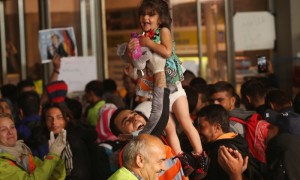 Towards a new immigration policy (1999-2000)
Towards a new immigration policy (1999-2000)
The “reform law”, which came into force on January 1, 2000, is today conceived by various scholars as the real turning point in migration policies in Germany, as it overcomes the identification of migrants as guest workers and also the ius sanguinis. In fact, one becomes a German citizen:
- if one of the parents has been legally and continuously living in the national territory for at least 8 years;
- if one of the parents has the right of residence indefinitely for at least 3 years;
- in cases where a child has dual citizenship status, at the age of eighteen, the possibility to choose between one of the two citizenships is given;
- after only 3 years of stay for those under 16;
On the other hand, marriage with a German citizen does not automatically give the right to German citizenship.The Green Card is also introduced, which allowed the granting of a work residence permit to certain categories of workers, among which the entry of the IT specialists from Asia and especially from India stand out.
In 2002 the new Chancellor Gerhard Schroder issues a consolidated text on immigration which abolishes all the rules that included restrictions for asylum seekers and for access to an employment contract; family reunifications and the immigration of entire families are incentivized, especially those with children under 12 years of age, to avoid that after that age they find it difficult to enter in the country’s school system. The Bundesamt Fur Migration und Fluchtinge is established, a competent center that selects and establishes the maximum number of entry flows for foreigners in Germany, providing facilities for the entry of qualified workers, from countries of the European Union.
Finally, it becomes compulsory for foreigners to take German language courses as a requirement for integration into the host society.
 Migration policies in the United Kingdom
Migration policies in the United Kingdom
In the case of United Kingdom, but also in France, migration policies are closely linked to the colonial past. The two countries differ as France seeks the assimilation of immigrants into the national culture, while United Kingdom historically sees cultural, linguistic, racial and religious diversity as a factor of the nation’s cultural wealth, and therefore it encourages this by giving to migrant communities full autonomy and recognition and supporting the construction of ethnic communities.
Colonial age
To understand the history of British immigration policies, it is necessary to begin by analyzing British policies beginning from the colonial age, where the acquisition of British citizenship was regulated with decrees by the Crown, which sanctioned the distinction between citizens who were entitled to citizenship and foreign citizens who could acquire it after years of residence and by specific request, swearing loyalty to the monarchy.
“British Nationality” and “Status of Aliens” (1914) represent the first legislative intervention that establishes that every citizen born in the colonial territory is a natural-born British citizen. Actually not all the citizens of the Commonwealth countries could circulate among the various countries of the crown, this also due to the wide autonomy and the different policies in the various Commonwealth countries.
In contrast to what happened at the same time in Germany and France, where immigration was encouraged to cope with the post-war reconstruction and economic growth, a very different policy was followed in England, focusing the attention on encouraging immigration from the countries of the Commonwealth, with the “British Nationality Act” decree of 1948.
«(1) This is a citizen of the United Kingdom and Colonies or a man who is under any enactment for the time being in force in any country mentioned in subsection virtue of that citizenship.
(2) Any person having the status aforesaid may be known as a British subject or as a Commonwealth citizen; and accordingly, in this Act and in any other enactment or instrument whatever, the expression “British subject” and the expression “Commonwealth citizen” shall have the same meaning.
(3) The following are the countries hereinbefore referred to, that is to say, Canada, Australia, New Zealand, the Union of South Africa, Newfoundland, India, Pakistan,
Southern Rhodesia and Ceylon » (British Nationality Act, 1948).
In the early years of the war and in the immediate post-war years (1950), immigration towards England consists of small specific ethnic groups, such as Jamaicans, West Indies, Cypriots, Italians and people coming from Eastern Europe.
Since the end of the 1950s, the phenomenon of immigration has experienced very intense flows, coming for example from the Caribbean; estimates say they were around 100,000 units only in London in 1961, in specific areas such as North Kensington and Notting Hilll.
Entire families lived there lived, mostly in a situation of economic hardship and in poor housing conditions, which often are opposed by the locals: various fascist groups, such as those of Sir Oswald Mosley, or even the gangs of Teddy Boys, begin a fight against the colored kids, with writings on the walls, like No colour bar here and Keep Britain White, coming up to physical violence and the burning of the Caribbean café.
During the month of August 1958 there were two weeks full of civil disorder at Notting Hill. On August 30th in North Kensington, a group of white boys belonging to fascist groups launch Molotov cocktails and bottles of milk against the homes of black kids. Unrest also spread to Tottenham and Acton. The facts of North Hill and North Kensington were unprecedented and the entire nation was shocked and began to protest against the violence.
After a year, the “Notting Hill Carnival” is organized, the first carnival of black culture, where thousands of people demonstrate against racism and discrimination, manifesting the need for a new policy, which starts with the acceptance of cultural diversity and for a multicultural society. The Notting Hill Carnival, which is still celebrated today, is one of the most important in Europe and certainly the most important in the United Kingdom.
The Commonwealth Immigrants Act
During the early Sixties, through family reunifications, there is a growing number of citizens coming from Pakistan. In 1960 the government set up a committee supervised by the «Richard Rab Bluter» to elaborate a new draft law on immigration. The draft law, ready in 1962, is named Commonwealth Immigration A and considers the following requirements to enter the United Kingdom:
a) an empolyment contract;
b) a request from the employers, who expressed the wish to have that specific person as a worker;
All those belonging to the former colonies, but who had a British passport issued by the central government of the United Kingdom, and children born in Britain were excluded from the application of the law.
Many analysts have explained how this decree created a form of discrimination against British Asians, settled mainly in East Africa. These citizens were excluded from the citizenship of what was their only home state, thus becoming stateless. Passports issued by the former British colonies, indeed, did not have the same effect as those issued in the United Kingdom. Only the right to remain in the colonies was granted to them.
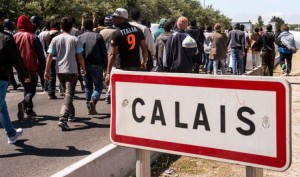 The “Commonwealth Immigration Act”
The “Commonwealth Immigration Act”
Very soon, with the achievement of independence, the issue of Asian minorities in the territories of Uganda and Kenya is also presented (Uganda Independence Act 1962, Kenya Independence Act 1963). The laws of these countries provided for foreigners and British Asians the obligation to apply for the acquisition of citizenship of the new countries within two years.
Between 1967 and 1968, Asians residing in Kenya and Uganda who had not accepted the aforementioned regulation or who had not applied in time, were discriminated and persecuted by the governments of the new independent states, forcing thousands of people to flee to the United Kingdom, guaranteed by the maintenance of British citizenship.
The most famous protester of the new entrances was Enoch Powell, who declared that it was impossible to accept new entrances, proposing to deprive the right of Asians coming from Africa to enter the country. There weren’t few political parties and the media that supported this line of thought, fomented by the fear of an invasion in the United Kingdom by the Asians of the former colonies.
The prime minister of the time, Harold Wilson, proposes the introduction of The Commonwealth Immigration Act, which blocks the automatic entry of British colonial citizens; only those who were born or naturalized in the United Kingdom or had one of the family members with such status could enter. This decision entails a dramatic situation for the British asian citizens, blocked and detained if they tried to enter the United Kingdom. The same situation does not occur, however, for the British Europeans of the former colonies, which shows that at the basis of that measure there was an attitude of racial discrimination.
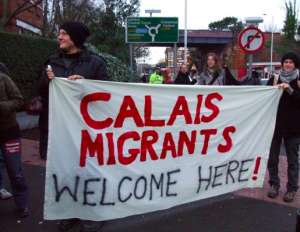 The entry into force of the Commonwealth
The entry into force of the Commonwealth
The Immigration Act however went against the 1950 European Convention on Human Rights, signed by United Kingdom itself. The British Asians have tried to bring their problem to the attention of the European Parliament and the European Commission on Human Rights. In 1973 the commission will declare that England had violated in particular the art. 3 of the Convention and made unequal treatment, penalizing certain citizens for racial reasons. The Commission has also condemned the rejection of reunification of husbands whose wives are already resident in the United Kingdom.
The Immigration Act
The British parliament, under pressure from the conservative party, approved in 1971 the Immigration Act, which gives full power to the Home Office to regulate the entry of migratory flows, their stay and the expulsion from the British territory. The main novelty of this law is the replacement of the British subjects and aliens with partials and non-partials, to distinguish who had the right of residence in the United Kingdom and who could not enter the territory (Bohning W. R,1972). Entry and stay requirements include birth, descent, adoption, residence on British soil for at least 5 years before the entry into force of the law and marriage with a British citizen. The members of the partials could have the right of abode (permanent residence).
If until the introduction of the law, entry and stay in the United Kingdom were based on the link of loyalty between the individual and the crown in any Commonwealth nation it was found, now the relationship between the subjects and the United Kingdom seen as a territory is integrated (Casari, 2010).
The Race Relations Act of 1976
In 1976 the first law on the illegitimacy of racial discrimination was issued, which declared illegal any discrimination on an ethnic basis, especially in the labour market and and at school, and it introduced the right to defend oneself and report discrimination in the labor courts.
The law provided for the establishment of the Commission for Racial Equality, which had essentially the task of eliminating discrimination and promoting equality of opportunities and good relations among people of different ethnicities. Furthermore, the Commission had the task of coordinating various local institutions in the field of immigration and in combating discrimination and racism.
British Nationality Act (1981)
The conservative government of Margaret Thatcher issues one of the most decisive laws about immigration and the acquisition of British citizenship, taking into consideration three parameters, or better “three types of British citizens”:
1) British citizenship: full British citizenship for those citizens of the colonies who were patrial, and who had close ties with British citizens (grandparents, parents, spouse, children);
2) British Dependent Territories Citizenship: British citizenship to people from territories dependent on the crown, such as Gibraltar, the Falkland Islands and Hong Kong;
3) British Overseas Citizenship: that category to which the rights of citizenship had been excluded in the previous legislations (for example the British Asians of East Africa).
With the approval of this law the right of British citizenship is recognized to all those people to who it had been unjustly denied. On one hand, the Thatcher government recognized and regulated the right of citizenship and permanent residence to certain groups that possessed the requisites listed above, but at the same time it took a strong stand against immigration, limiting residence on British soil to all those categories of people excluded from the same requirements.
The return to the ius sanguinis is also decisive on the question of citizenship. Under the new legislation a child born in England from foreign parents must explicitly request British citizenship, proving to have resided in United Kingdom for at least the first 10 years of life.
Very soon there is a need for further legislative changes in the face of the changes that have occurred since 1997 in the former colonies. In that year the agreement with China expired and Hong Kong passed under the Chinese control; the new legislation for British citizens on the island takes the name of British National (Overseas).
With the Immigration and Asylum Act of 2002 the 1981 law is supplemented, guaranteeing British citizens overseas who had not yet been able to acquire the British citizenship, and who in the meantime had acquired no other citizenship, the right to enter and reside in the United Kingdom territory.
 Citizenship and Immigration Act of 2009
Citizenship and Immigration Act of 2009
This supplementary regulation grants the right to the children of members of the armed forces, born abroad during the service of their parents, to become British citizens (Montagna,. Sorrentino, 2004).
I would like to analyze in more detail the current procedures for acquiring citizenship in the United Kingdom. As already mentioned, the fundamental law in this regard was the British Nationality Act.
Today, British citizenship is generally acquired as a birthright: if both parents, or at least one of them, is a British citizen when the child is born, or if at least one of the parents, even if they are not British citizens, has permanent residence in the United Kingdom territory.
Particularly interesting is the implementation of the law in particular cases, when none of the parents possesses neither citizenship nor residence on British territory. In this case, the child born in the British territory has the right to apply for citizenship if he / she spends at least 10 years here, with an absence not exceeding 90 days. In the event that one of the parents becomes a British citizen or moves to the United Kingdom and takes on permanent residence here, the child becomes a British citizen at the age of eighteen, upon his express request.
Finally, a person born in the United Kingdom can apply for British citizenship if one of the parents possesses the British passport of overseas settlers (eg Hong Kong) or has permanent residence for at least 5 years in the United Kingdom.
Naturalization of foreign citizens applying for British citizenship
British legislation allows foreign people to access British citizenship by naturalization. An example is the spouse or foreign partner of a British citizen, who can have the right to citizenship after a period of continuous cohabitation with the British citizen in the UK for at least 3 years. The applicant has the duty to demonstrate that he / she possesses the necessary requisites for naturalization, such as residence for at least three years, to have no pending suits with justice, to be of age and to have no mental health problems.
In cases where the request for citizenship is done outside of marriage or cohabitation with British citizens, the foreigner must prove that he possesses the requisites that are linked to his personal status, to be settled down in England in a regular manner for at least 5 years without interruption (with a maximum of 90 days per year of absence) and to have a suitable job and accommodation.
With the last decree of 2005 a further obligation was introduced, in a restrictive sense, to be precise the successful completion of two exams, one of language and one of British history and civilization.
The Home Office has activated a legislation after the terrorist acts that took place in London in 2005, which opens up the possibility of rejecting requests for citizenship presented by foreigners, without warning and without giving any motivational explanations in this regard.
Furthermore, the new anti-terrorism decree provides for the revocation of British citizenship in cases where the foreign citizen, who had acquired citizenship through naturalization, is held responsible for having carried out acts against the interests of the homeland or for having declared falsehood.
In the development of this work we have analyzed the most important reception and integration models adopted in Italy, the United Kingdom, France and Germany (Cespi, 2000). As we have seen, the migration policies of these countries are extremely different from each other, both for the individual regulations and for the theoretical paradigm to which they can be traced back (Pierre, 1978).
The French model is based on the concept of assimilation, the German one doesn’t guarantee immigrants a system of specific rights, which respond to the needs of ethnic groups present in the territory, the English one, which is in particular multicultural, recognizes broad spaces for inclusion and integration into society.
The analysis of the Italian situation was preliminary: we observed how the immigrants who are in Italy are subject to the lack of a real model of reception and integration. This structural gap has been bridged by single legislative measures that seem, however, disconnected, if not even contradictory to each other.
Compared to the other countries examined, in the Italian case, the lack of a new idea in the treatment of the migratory phenomenon has meant that immigrants turn out to be excluded, making a real integration model impossible to occur.
The methodology
In order to empirically identify the validity of the interpretative hypotheses, from a comparative perspective, and oriented, essentially to highlight the affinities and differences, it was considered important to deepen the characteristics of migratory paths and the impact of policies in the Italian context. and in the German one focusing the research on the acquisition of citizenship.
In particular, the research has moved, first of all, from the analysis of the regulatory framework in force in the field of migration policies, which allowed me to summarize the tools used to protect the lives of foreign citizens and at the same time respecting their ethnic, cultural and religious diversity.
In this regard, we will try to provide some guidelines for their functioning, with the purpose in the end, to bring out and test the validity of the interpretative hypotheses and the corresponding political proposals for safeguarding and protecting foreign communities in respect of foreign communities in Italy. The reason of this choice on the “state of citizenship” (effective citizenship) in the regulatory systems in force in Germany, France, the United Kingdom and in Italy, the latter considerably called into question at a national level as well in Europe, showing the existence of multiple questionable elements, especially at a regulatory level, which, however, are likely to be truthful, by an excessive reduction and fragmentation of migration policies. The more and more intense increase of migratory flows in Italy and the choice by migrant citizens of a long-term and definitive permanence means that immigration is a structural fact and is called upon to undertake important structural reforms that make it possible to overcome the logic of a temporary migration, and on the other hand, to restart an effective recognition process able to protect foreign communities in the territory.
Dialoghi Mediterranei, n.34, novembre 2018
[*] Il presente contributo si articola in tre parti. In questo numero si pubblica la terza parte. La prima e la seconda parte sono state rispettivamente pubblicate sui nn. 32 e 33.
Abstract
All’interno dell’Unione Europea ci sono diversi Stati che hanno varato leggi, spesso seguendo diversi paradigmi, per far fronte non solo all’aumento dei flussi migratori, ma anche per favorire l’integrazione e la partecipazione degli stessi migranti nella vita socio-politica ed economica. Negli ultimi decenni, l’immigrazione in Europa è diventata una questione di importanza primaria e strategica per la definizione sia delle politiche interne che delle relazioni esterne dell’Unione. La progressiva risoluzione di importanti gruppi nazionali ed etnici pone importanti sfide economiche, sociali e culturali, alle quali finora le politiche attuate hanno risposto solo in parte. Concetti guida come l’integrazione, l’assimilazione e il rispetto per la diversità continuano a faticare a trovare un’adeguata realizzazione nelle politiche di accoglienza degli Stati europei.
A questo proposito, una vera rivoluzione in questo campo è stata la realizzazione dei “principi base comuni” del 2004, che hanno reso gli Stati membri consapevoli del rispetto dei diritti fondamentali, della non discriminazione e delle pari opportunità per tutti, destinata a diventare in seguito una semplice “agenda comune per l’integrazione”. In questo contesto, va ricordata la decisione del Consiglio e del Parlamento europeo n. 1983/2006 che ha proclamato il 2008 Anno europeo del dialogo interculturale.
Con questa ricerca intendiamo analizzare le normative riguardanti la migrazione dei governi europei la loro evoluzione nel tempo, prestando particolare attenzione all’attivazione delle strategie di inclusione in alcuni Paesi dell’Unione Europea. Al tempo stesso, intendiamo individuare una strategia per una possibile cooperazione nella gestione dei processi migratori. I regolamenti di integrazione varati in Italia, Germania, Francia e Regno Unito saranno esaminati dagli anni ’40 al 2015 e verrà condotto uno studio comparativo tra le politiche comunitarie e quelle dei quattro Paesi scelti per evidenziare caratteristiche comuni e divergenze.
References
ASCOLI, U. (1979), Movimenti migratori in Italia, Bologna, Il Mulino.
BARDET, JP. (1999), Cinquante ans d’immigration, in “L’Histoire », Paris, Fevrier n° 229.
BAROU, J. ( 1984), L’espace immigré au comment les rendre invisible in « Politique aujourd’hui », n° 6,
BASTEINER, E. – DASSETTO, G. (1990), Italia, Europa e nuove immigrazioni,, Torino, Fondazione Agnelli.
BERGNACH, L., SUSSI, E. (1993), Minoranze etniche ed immigrazione, Milano, Franco Angeli.
BOHNING, W. R, (1972), The migration of workers in the United Kingdom and the European Community, London, Oxford.
BOLAFFI, G. (1996), Una politica per gli immigrati, Bologna, Il Mulino.
BONIFAZI, C. (1998), L’immigrazione straniera in Italia, Bologna, Il Mulino.
BONNET, J.C. (1976), Les pouvoirs publics français et l’immigration dans l’entre-deux-guerres, Lyon, Presse Universitarie de Lyon.
BRUSA, C. (1997), Immigrazione e multicultura nell’Italia di oggi, Il territorio, i problemi, la didattica, vol. I, Milano, Franco Angeli.
BUSSETTA, G. (1993), Il governo propone in Francia il blocco totale dell’immigrazione, in Il Sole 24 Ore, del 3 Giugno.
CAGGIANO, G. (2000), Migrazioni e diritto internazionale, in Agenzia romana per la Preparazione del Giubileo, Migrazioni, Roma, Scenari verso il XXI secolo, 12- 14 Luglio.
CALA, A. (2010), La tolleranza spagnola nei confronti dei gitani, un modello per l’ Europa?, Rai. Consultabilein:http://www.rai.it/dl/tg3/articoli/ContentItem-97e15fdd-c03c-4287-8ac6-1c92e60611da.html
CALCALATERRA, M. (1998), La Francia allarga le maglie per regolarizzare gli immigrati, in Il Sole 24 Ore del 18 Agosto.
CALVANESE, F. (1992), Spazi e tempi delle nuove migrazioni in Italia, Europa e Paesi extraeuropei, in Mottura G., Arcipelago Immigrazione. Caratteristiche e modelli migratori in Italia, Roma, Ediesse.
CAPANO, T. (1999), La partecipazione politica in Zincone G. (a cura di), Primo rapporto sull’integrazione degli immigrati in Italia, Bologna, Il Mulino.
CARCHEDI, F. (2000), La condizione degli immigrati in Italia in Agenzia romana per la Preparazione del Giubileo, Migrazioni, Roma, Scenari per il XXI secolo, 12- 14 Luglio.
CASARI, G. V. (2010), Il diritto dell’immigrazione (volume 2), Quaderni de «Il diritto dell’economia». Modena, Modena.
CASTLES, S., MILLER, J, M. (1993; 1998), The Age of Migration, The migratory process. London, Makmillan Press LTD.
CENSIS, (2000), Processi globali e forme di governo delle migrazioni in Italia e in Europa. Una sintesi delle ricerche, in Agenzia romana per la preparazione del Giubileo, Migrazioni. Scenari verso il XXI secolo. Convegno internazionale, Roma 12-14 Luglio
CESPI. (2000), Il governo dei processi migratori nel quadro europeo: obiettivi, strumenti e problemi, in CENSIS, Processi globali e forme di governo delle migrazioni in Italia e in Europa. Una sintesi delle ricerche.
CHEMILLIER-GENDREAU, M. (1998), L’injustifiable. Les politiques françaises de l’mmigration, Paris, Bayard Editions.
COLOMBO, A., SCIORTINO, G. (2004a), Gli immigrati in Italia, Bologna, Il Mulino,
Italian Immigration: The origins, Nature and Evolution of Italy’s Migratory System, in «Journal of Modern Italian Studies», volume 9, N° 1 (2004b): 49-70.
CORTI, P. (2003), Storia delle migrazioni internazionali, Roma-Bari, Laterza.
COSTA-LASCOUX, J. (1999), L’ integrationàl a français: une philosophie, des lois, in Immigration et integration. L’ etat des savoirs, Paris, De La Decouverte.
COSTANTINI, D. (2009), Politiche migratorie e discriminazione :il caso francese. Consultabile in Archivio Marini: http://archiviomarini.sp.unipi.it/345/1/dis.pdf
DI COMITE, L,. IAQUINTA, P. (2002), L’emigrazione Italiana 1870-1970, Archivio di Stato.
EINAUDI, L. (2007), Le politiche dell’immigrazione in Italia dall’unità a oggi, Bari, Laterza.
EINAUDI, L.( 2007), Una gestione amministrativa oscillante tra tolleranza e repressione, Le politiche dell’immigrazione in Italia dall’unità a oggi, Bari, Laterza
FARINI, L. C., Massima autorità politica del Mezzogiorno dopo l’Unità, Scriveva a Cavour dopo il suo arrivo a Napoli “Altro che Italia, questa è Africa, consultato in: http://www.identitaeuropea.it/?p=3203
FASSIN, D. (1997), Les lois de l’inhospitalité. Les politiques de l’immigration à l’èpreuve des sans papiers, XIII, Paris, Editions La Decouverte
GASPERINI, V., CASARI- G. CORDINI (2003), Il diritto dell’immigrazione, Modena, Mucchi editore
GEDDES, A. (2010), The politics of Migration and Immigration in Europe, Los Angeles, Sage Gower.
GISTI, (1997), Politiques migratoires dans l’Unionne européenne, in « Troisiéme Meeting anti-racsiste » du 23 Aout-1September.
GERARD, N. (2007), Immigration, antisémitisme et racisme en France (XIX-XX siècle), Discours publics, humiliations privées, Paris, Fayard.
GOBETTI, E. (2007), 1943-1945. La lunga liberazione, Milano, Franco Angeli.
GRILLO, P. (1989), Scende in piazza l’Italia antirazzista, La Repubblica, 7 ottobre 1989.
KAMMERER, P. (2003), Germania: un secolo di politica migratoria, in BASSO P., PEROCCO F, (a cura di), Gli immigrati in Europa, Milano, Franco Angeli.
LIVI BACCI, M. (2005), Storia minima della popolazione del mondo, Bologna, Il Mulino.
LIVI BACCI, M. ( 2010), In cammino, breve storia delle migrazioni, Bologna, Il Mulino.
MADJIGUENE, C. (1996), Sans-papiers; i primi insegnamenti , in “Politiqes” del 2 Ottobre
MASSEY, S, D. (1993), Theories of International migration, in “Population and development review”, vol. 19.
MELOTTI, U. (1991), Specificità e tendenze dell’immigrazione straniera in Italia, in MACIOTI M. I., Per una società multiculturale, Napoli, Liguori.
MELOTTI, U. (1993), La sfida dell’immigrazione: aspetti generali e problemi specifici del caso italiano, in BERGNACH L. e SUSSI E., a cura di, Minoranze etniche ed immigrazione. Milano, Franco Angeli.
MELOTTI, U. (2004), Migrazioni internazionali, Milano, Mondadori
MONTAGNA, DI, N., SORRENTINO, G. (2004), Vecchio continente, nuovi cittadini, normative, dati e analisi in tema di cittadinanza, a cura di Laura Facchi, Rapporto Regno Unito, Fondo europeo per l’integrazione di cittadini di paesi terzi (Realizzato da ISMU)
NIESSEN, J., SCHIBEL, Y. (2007), Manuale sull’integrazione per i responsabili delle politiche di integrazione e gli operatori del settore, Comunità Europea, scaricato dal sito della Commissione Europea all’indirizzo: http://ec.europa.eu/justice_home/ .
NOIRIEL, G. (2007), Immigration, antisémitisme et racisme en France XIX-XX siècle. Discours publics, humiliations privées, Paris, Fayard.
PEROCCO, F. (2012), Immigrati e disuguaglianza lavorativa nel sistema delle disuguaglianze italiane, Rapporto annuale sull’economia dell’immigrazione, Bologna, Il Mulino.
PIERRE, G. (1978), Le migrazioni internazionali, Roma, Editori Riuniti.
PUGLIESE, E., MACIOTI, MI. (1991), Gli immigrati in Italia, Bari, Laterza.
PUGLIESE, E. (2002), L’Italia tra migrazioni Internazionali e migrazioni interne, Bologna, Il Mulino.
SALVIA L., Intervista a Livia Turco,in La Stampa del 9/11/1996
SAYAD, A. (2002)., La doppia Assenza, Torino, Cortina Raffaello.
SBAI, S. (2002), L’inganno: vittime del multiculturalismo, Siena, Cantagalli.
SCHOR, R. (1996), Histoire de l’ immigration en France, de la fin du XIX siècle à nos jouurs, Paris, Armand Colin.
SIMONE, A. (2002), Divenire Sans Papiers: Sociologia dei dissensi metropolitani, Milano, Associazione Culturale Etertopia.
TAIEB, E. (1998), Immigrés: l’effet génération, Paris, Les Editions de L’Atelier.
TOMEI, G. (2001), Città, cittadinanza e welfare municipale, Viareggio, Mauro Baroni Editore.
TREVES, A. (1976), Le migrazioni interne nell’Italia Fascista, Torino, Einaudi.
TRIBALAT, M. (1997), Cent ans d’immigration, étrangers d’hier français aujourd’hui. De l’immigration à l’assimilation., La Decouverte, Paris.
VOLPI, A. (2007), Mappa mondo Post globale, Milano, Terre di Mezzo.
WEIL, P. (1995), La France et ses étrangers. L’aventure d’une politique de ‘immigration de 1938 à nos jours, Paris, Gallimard.
ZINCONE, G. (2007), Primo rapporto sull’integrazione degli immigrati in Italia, Bologna Il Mulino.
Consulted
CARITAS-ITALIANA – FONDAZIONE MIGRANTES, Dossier Statistico Immigrazione Caritas-Migrantes 2011 http://www.caritasitaliana.it/home_page/pubblicazioni/00002486_Dossier_Statistico_Imm igrazione_Caritas_Migrantes_2011.html
NORD E SUD DEL MONDO, RAPPORTI ASSIMETRICI NELL’ERA DELLA GLOBALIZZAZIONE http://www.caritas.vicenza.it/contentimages/nord_sud_superiori.pdf
LA CASA DEGLI ALBANESI D’ITALIA, http://www.arbitalia.it/storia/migrazioni.htm
COSE DI SCIENZA, http://www.cosediscienza.it/varie/03_migrazioni.htm OFFICE OF THE HISTORIAN http://history.state.gov/milestones/1921- 1936/ImmigrationAct
INTERNATIONAL MIGRATION OUTLOOK-RAPPORTO OSCE-SOPEMI 2010
http://www.cnel.it/271?shadow_documento_altri_organismi=3370
ORGANIZATION FOR SECURITY AND CO-OPERATION IN EUROPE
http://www.osce.org/
International Migration Outlook”- Rapporto OCSE-SOPEMI 2010
NORMATIVA 943/1986 http://www.normattiva.it/uri-res/N2Ls?urn:nir:stato:legge:1986- 12-30;943
COMISSIONE PER LE POLITICHE DI INTEGRAZIONE
http://www.pavonerisorse.it/intercultura/2001/integrazione
ORGANIZZAZIONE INTERNAZIONALE PER LE MIGRAZIONI, Centro studi e ricerche Idos, Roma, 2012
CONVENZIONE DEI DIRITTI DELL’UOMO, CORTE EUROPEA DEI DIRITTI DELL’UOMO http://www.echr.coe.int/echr/
BRITISH NATIONALITY ACT http://www.uniset.ca/naty/BNA1948.htm
http://www.nationalarchives.gov.uk http://www.legislation.gov.uk
www.affarisociali.it
www.bok.net/pajol/sanspapiers • www.cestim.com
www.cronologia.it
www.romaciviva.net
www.unimondo.org
___________________________________________________________________________
Shkelzen Hasanaj, dottore di ricerca in Scienze Politiche presso l’Università di Pisa. Collabora alle attività della disciplina giuridica del fenomeno religioso (IUS11) del Dipartimento di Giurisprudenza dell’Università di Pisa. È autore di diversi articoli scientifici in Italia e all’estero: Le sfide d’integrazione e dell’inclusione in Italia: Per un nuovo paradigma basato su Dinamicità e Differenziazione, in «Diritto e Religioni», n. 2, 2016:191-207; Vivere nella diversità: Sviluppo delle tesi interculturaliste in dialogo con il modello multiculturalista, in «The Lab’a Quarterly», n.1, 2017: 27-44; Multiculturalism vs interculturalism: new paradigm? (sociologic and juridical aspects of the debate between the two paradigms) in «Journal of Education & Social Policy», published in Vol. 4 No. 2, 2017, ISSN 2375-0782 (Print) 2375-0790 (online).
______________________________________________________________




